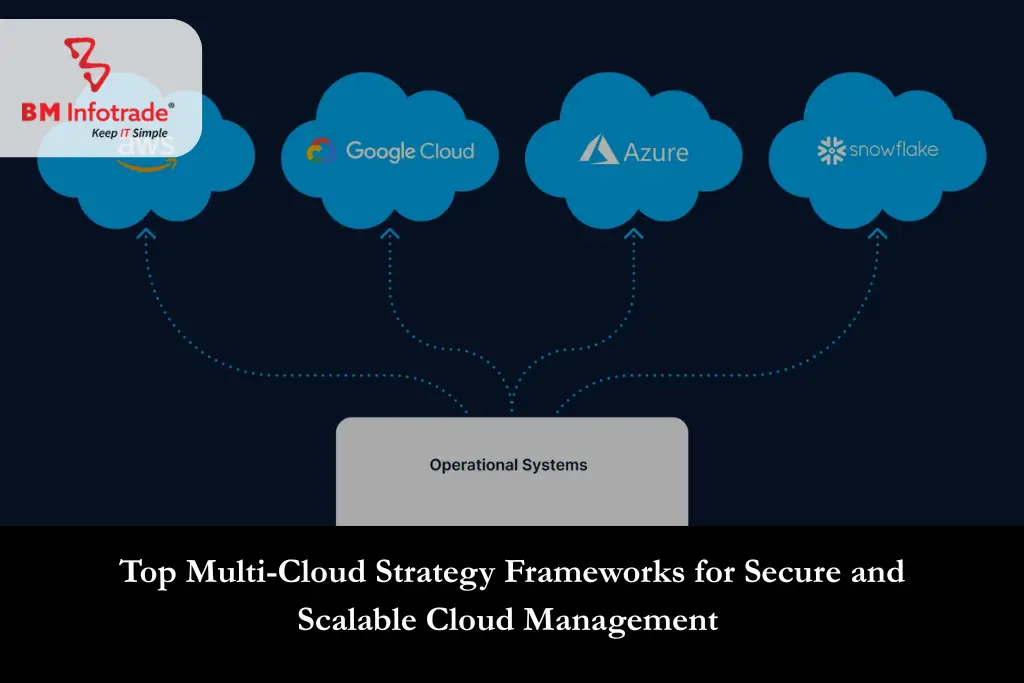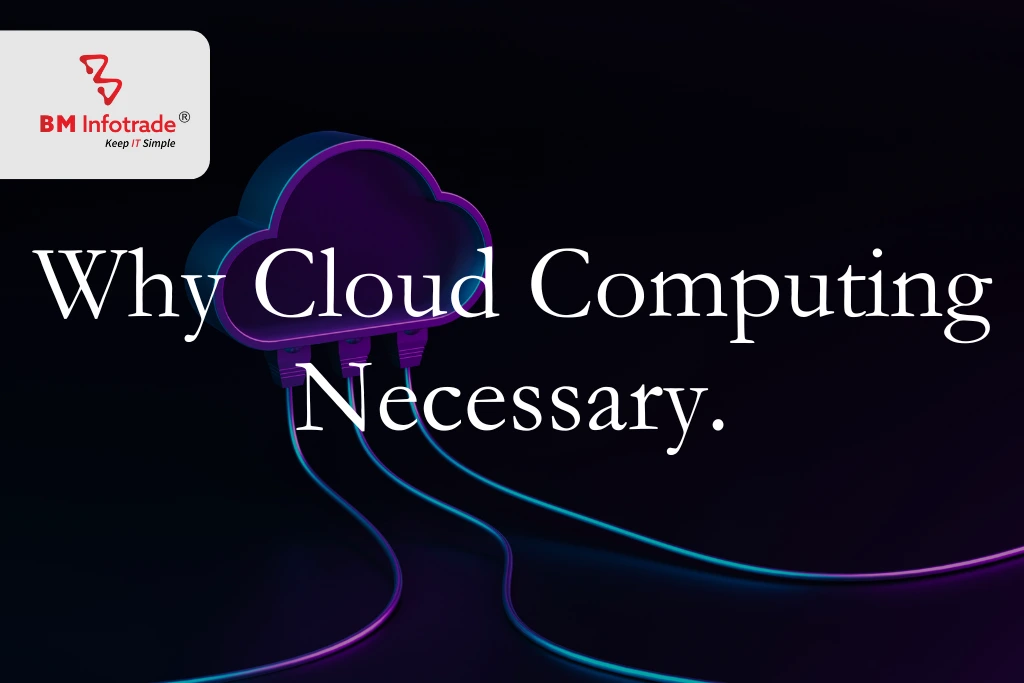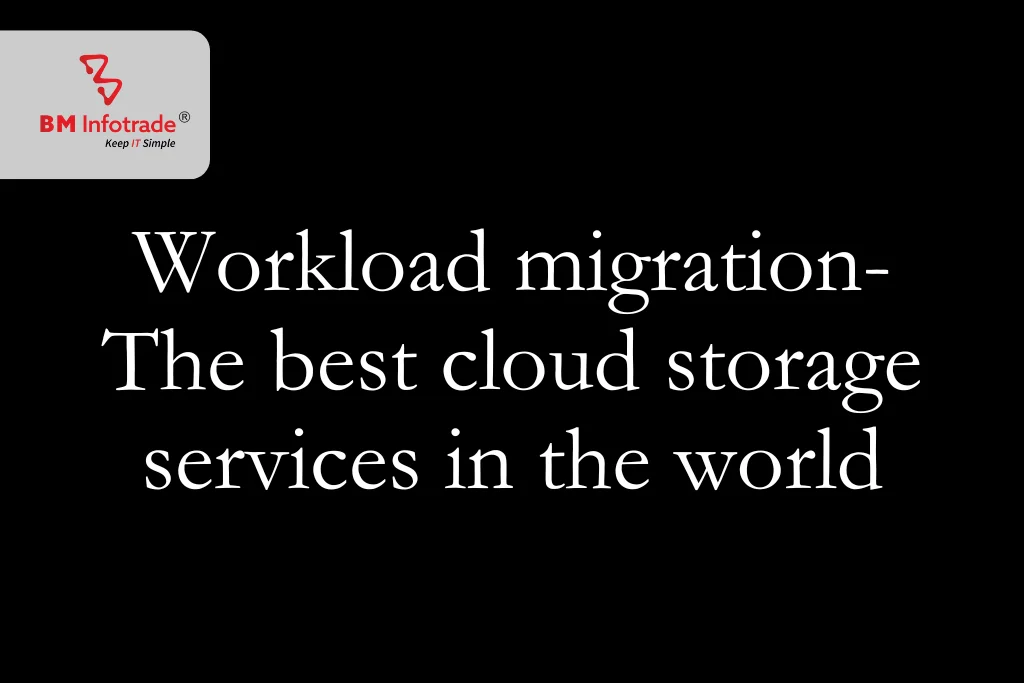Top Multi-Cloud Strategy Frameworks for Secure and Scalable Cloud Management
Discover the leading multi-cloud strategy frameworks that help businesses achieve secure, scalable, and efficient cloud management in a hybrid digital world.

Top Multi-Cloud Strategy Frameworks for Secure and Scalable Cloud Management
Table of Contents
Within today’s multi-cloud environment, businesses are increasingly enhanced to provide one of the three factors be it scalability, operational efficiency, or security, with the help of one or multiple cloud service providers. By going multi-cloud, organizations are not locked in a specific vendor and can make use of the resources from multiple vendors which provides better optimization, cost reduction, and risk mitigation. This guide provides a detailed analysis of the central aspects which can help in achieving near-seamless scalability and superior security, as well as pointers towards mastering multi-cloud strategies.
Understanding Multi-Cloud Strategies
To use a hybrid cloud approach, companies can use a combination of Amazon Web Services, Microsoft Azure, Google Cloud Platform, etc. to distribute their application workload. This strategy enables firms to pick the best service from every contractor, thus meeting their needs efficiently without fearing that they will be trapped in a single vendor.

Benefits of Multi-Cloud Strategies
-
Improved Scalability: Using multiple cloud providers to distribute the load enhances the ability of organizations to scale their resources immediately, guaranteeing performance during peak periods.
-
Enhanced Security: Splitting the workloads among multiple cloud providers helps to use various security measures, minimizing the risk of data loss and ensuring compliance with the standards in the industry.
-
Cost Management: In a multi-cloud construct, organizations have the option to compare pricing structures and pick the most economical solution, thus economizing spending and managing resources judiciously.
-
Greater Flexibility: By spreading their cloud service requirements, they avoid becoming dependent on a single supplier, thus having the added flexibility and power of bargaining along with the exposure to the risks of vendor-specific problems.
Read More:- Top Cloud Computing Tools You Need to Know
Key Components of a Successful Multi-Cloud Strategy
To accomplish our goals, we adhere to a set of determined strategic goals and best practices, which can further be divided into several different categories and sets of practices, based on the methodology proposed by the architecture assessment framework.
Comprehensive Planning & Assessment
-
Workload Analysis: Assess applications and workloads for a multi-cloud strategy deployment in regards to demand for performance, how sensitive the data is, and compliance requirements.
-
Strategic Alignment: Continuously evaluate whether the multi-cloud strategy is conducive to business objectives and whether any objectives such as agility, cost, and disaster recovery, among others, were set.
Robust Architecture Design
-
Interoperability: Develop applications that enhance cooperation between different cloud vendors for better data consolidation and administration.
-
Scalability: Develop architectures that allow for high volumes of varied clouds to expand sideways while still preserving performance standards during demand peaks. These have been approved for release.
Effective Management and Governance
-
Unified Management Tools: Leverage enhanced administration tools to administer resources over several cloud platforms.
-
Policy Enforcement: Develop policy and governance controls and tools so that security policies, compliance standards and practices, etc, are consistently applied across the cloud.
Comprehensive Security Measures
-
Data Protection: Use encryption, access management systems, and auditing of the cloud assets to protect valuable resources in multiple cloud environments.
-
Threat Detection and Response: Ensure detection and response systems and processes are in place and utilize sophisticated security devices in anticipation of possible threats.
Continuous Assessment and Improvement
-
Performance Monitoring: Every cloud service and software application is regularly monitored so that any aspects that may require improvement to optimize the user experience can be identified and rectified.
-
Cost Management: Constant cost and spending analysis is conducted to maximize the return on investment in cloud resources.
Read More:- Importance of Cloud-Native Security
Challenges and Considerations
You can reap so many benefits of a multi-cloud strategy, however, it comes with its disadvantages, some of which include the following:
-
Complexity: Operating and coordinating a multitude of cloud environments can be an intricate task which may require advanced tools and specialized employees.
-
Integration Issues: Different cloud services would require custom integrations for failure-free interactions with others, which would in turn need thorough testing.
-
Security Risks: Security across providers needs to be unified, and for this to happen a proper policy strategy needs to be developed to minimize the risks.
Best Practices for Implementing a Multi-Cloud Strategy

-
Develop an effective Multicloud Adoption Strategy: Establish unambiguous objectives, timelines, and task assignments relevant to the multi-cloud adoption framework while adhering to business and stakeholder expectations.
-
Foster the Ability to Socialize: Utilize teams that have the knowledge and skills to effectively operate and work in different cloud environments to create a productive active learning environment.
-
Make Use of Systems Automation: Deploy automation software to facilitate activities like deployment, monitoring or scaling, thereby minimizing manual engagement and reducing the possibility of errors.
-
Create Strong Relationships with Vendors: Insist on the regular exchange of information between cloud service providers and clients to keep track of various features, upgrades and optimization techniques in cloud usage.
-
Set Up A Good Plan For Disaster Recovery: In business practices such as disaster recovery, ensure the designing and testing of well-thought-out business scenarios using several clouds to support the business if the current environment fails or is otherwise compromised.
Conclusion
In today’s world, one of the most important theoretical concepts for an organization is mastering multi-cloud strategies. In regards to scaling their organization, which would eventually bring a lot of value to the firm. If you were to create multi-cloud architectures, proper management, and absolutely the best practices, businesses would be able to explore the full potential of optimal multi-cloud environments. Furthermore, such practices go a long way in ensuring that aside from high performance and cost-effectiveness, the requisite flexibility and resilience that will allow the business to succeed in a competitive environment is provided.







Anshul Goyal
Group BDM at B M Infotrade | 11+ years Experience | Business Consultancy | Providing solutions in Cyber Security, Data Analytics, Cloud Computing, Digitization, Data and AI | IT Sales Leader